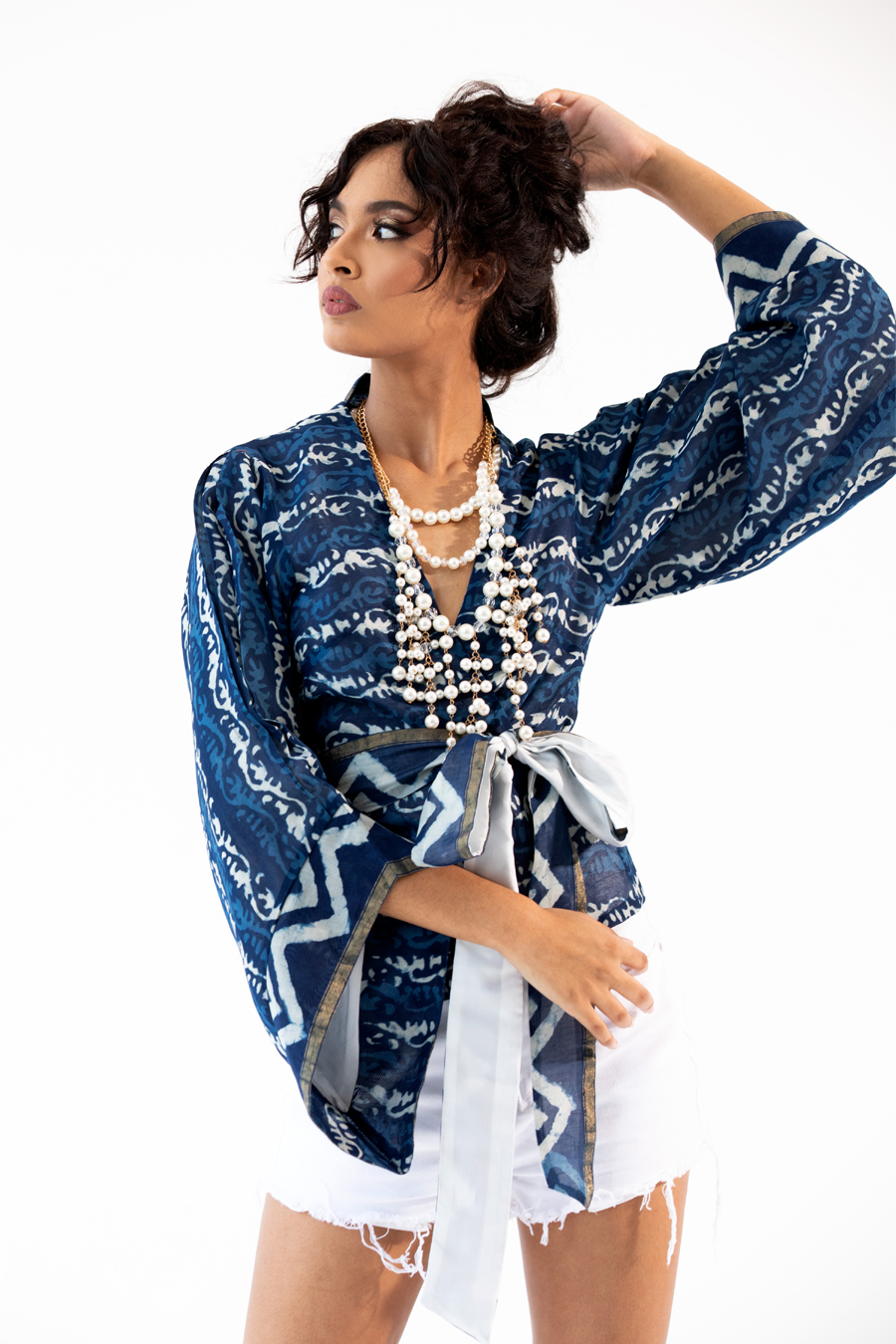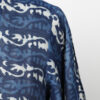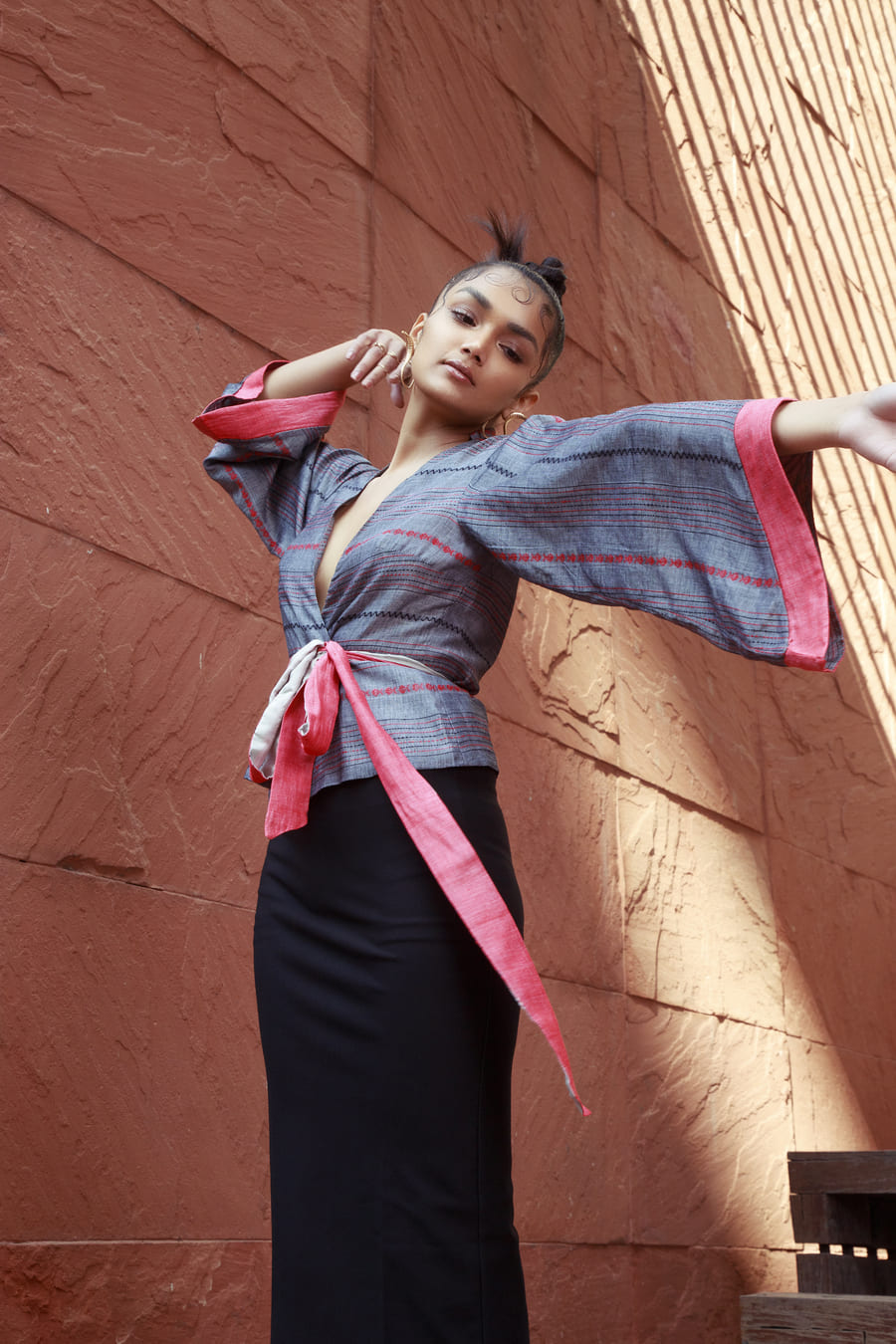Both the kimono style jacket and waist tie are lined in pure habotai silk of a contrasting colour to that of the outer fabric.
Featherlight in all fabric choices, with no zips or buttons, the Tulā is the perfect companion on a warm summer’s day.
A long flowy skirt, over an A-line dress, linen pants, shorts or jeans – almost anything goes!
Our model is a UK size 6, measuring 1.66 meters in height
A speciality weave, Chanderi is hand woven on a traditional loom using 3 thread varieties: cotton, silk and zari.
This creative technique is believed to date back to the 11th Century and is the namesake for the historical town of Chanderi in the Indian State of Madya Pradesh, which served as a trade route for Central India.
Chanderi is a traditional, ethnic fabric that is characterised by a glossy transparency, ultra-lightweight and breathable qualities, as well as its delicate texture. To achieve this type of shine and translucence, the raw yarn glue is not removed (a process known as non-degumming or single falture). This is an exclusive quality of the weave.
Dabu Handblock Print is an elaborate, labour intensive technique from Rajasthan involving mud-resist hand block printing and dyeing. Several stages of printing and dyeing are required to create these patterns and designs.
Zari refers to a tinsel thread of gold/silver that is woven into a fabric. The ancient art of zari involved the weaving of real gold or silver thread! Today, we use cotton wrapped in gold or silver metallic yarn.
Brought to India by the Persians during the Age of the Rig Veda (1700 and 1100BC), zari became an exclusive weave and embroidery; considered a true embodiment of elegance.
















 100% pure Habotai Silk lining
100% pure Habotai Silk lining Contrasting Lining (Pure white)
Contrasting Lining (Pure white) Concealed seams and stitches / No zips or buttons
Concealed seams and stitches / No zips or buttons Made by hand
Made by hand Craft: Handloom weave
Craft: Handloom weave Origin: Chanderi
Origin: Chanderi Time on loom approx. 3-5 days of love, care & craft
Time on loom approx. 3-5 days of love, care & craft


